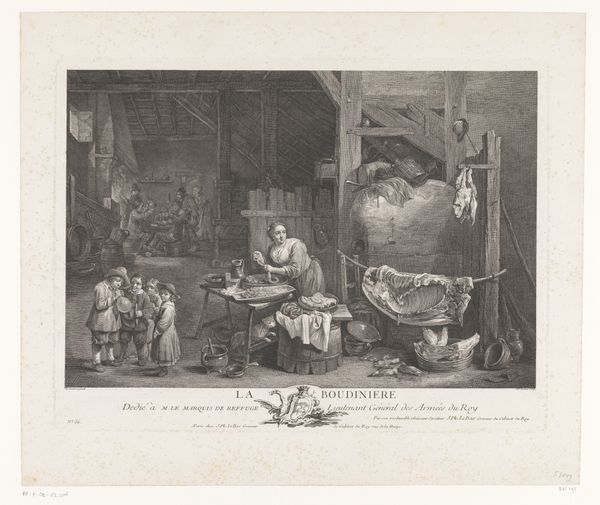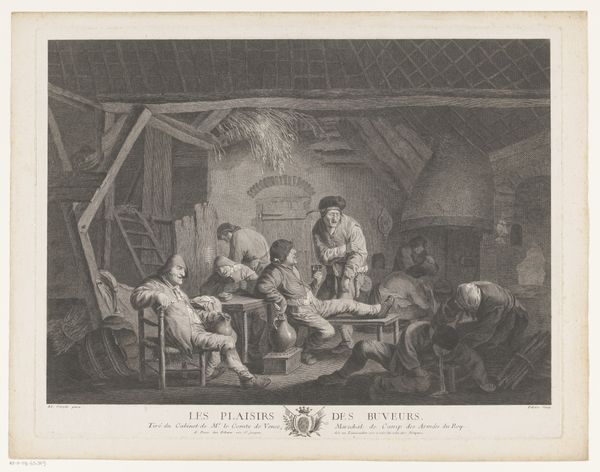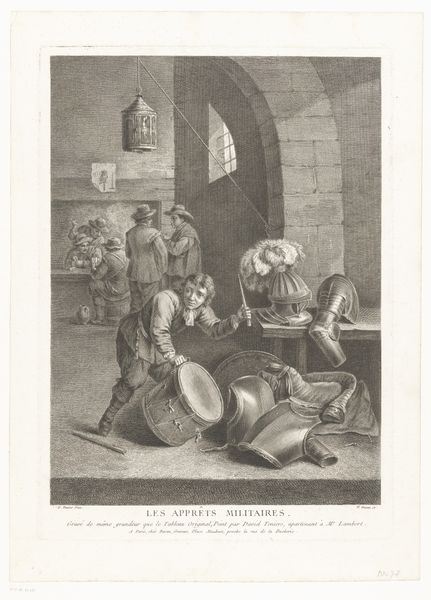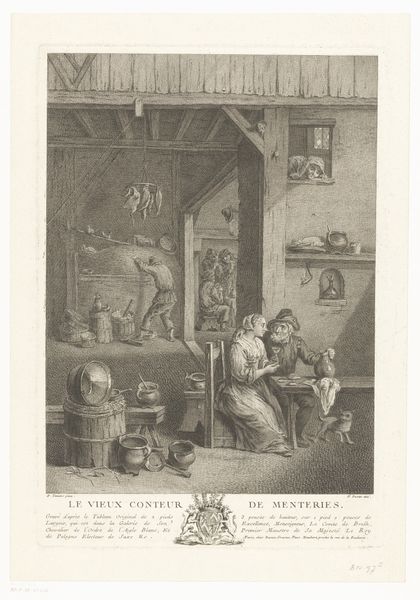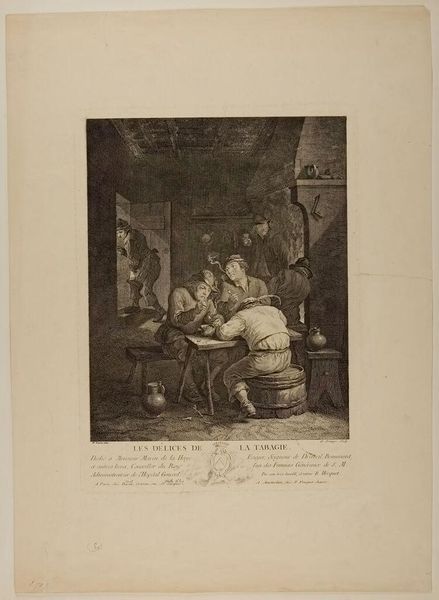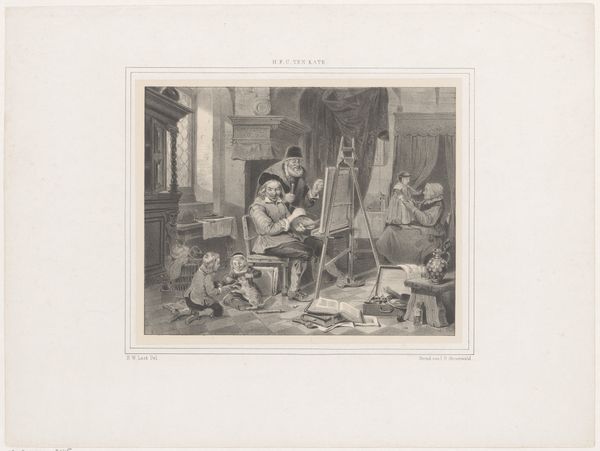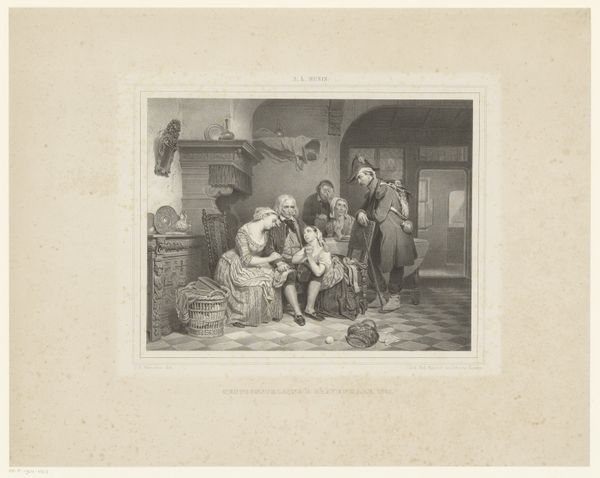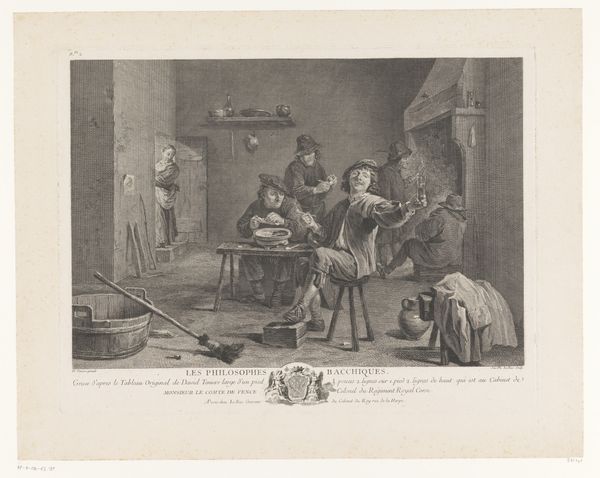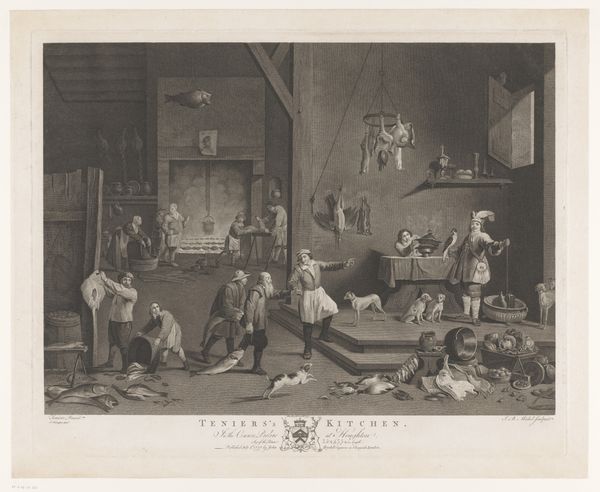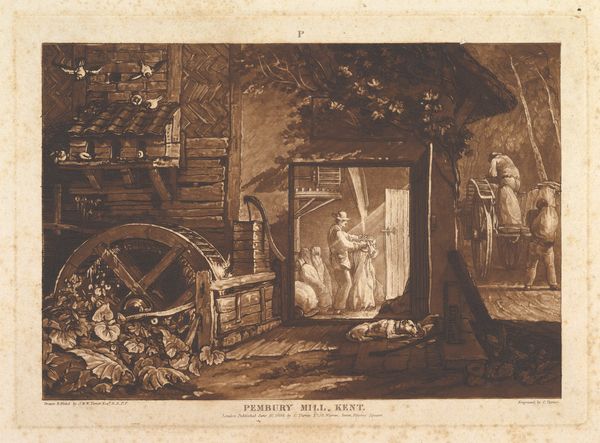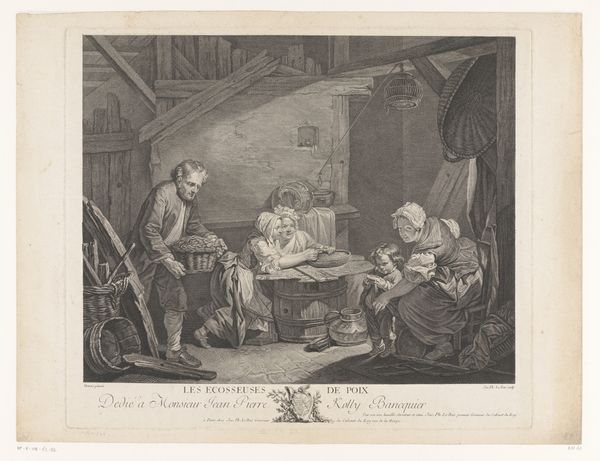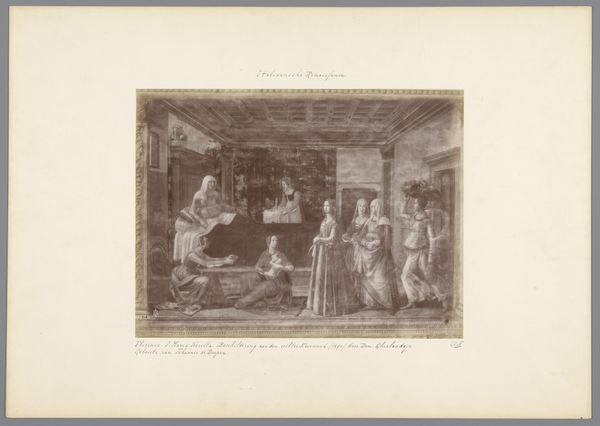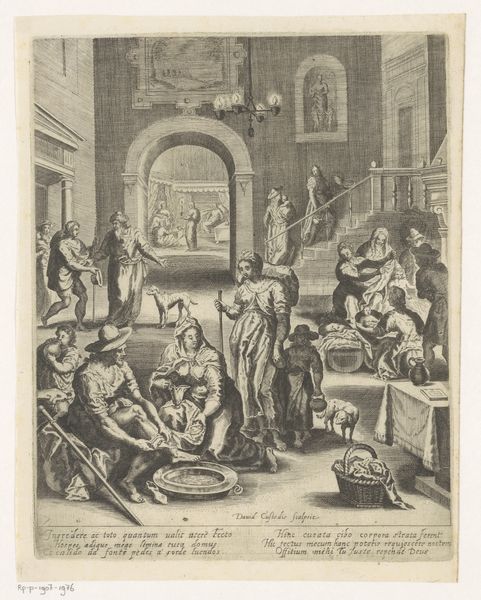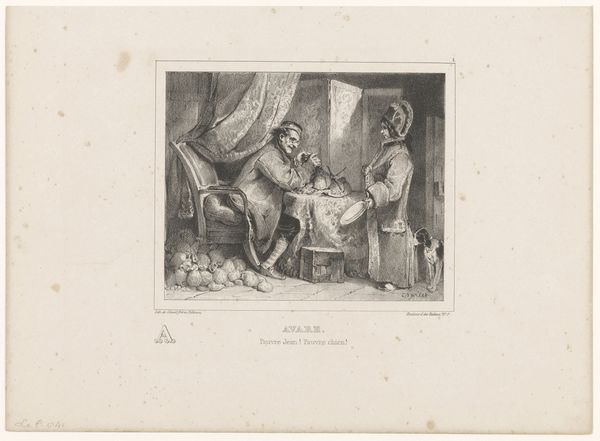
Dimensions: height 353 mm, width 452 mm
Copyright: Rijks Museum: Open Domain
Editor: This engraving from 1788 by Robert Laurie, titled "Groentekraam en bedelaar," or "Green Stall and Beggar" really caught my eye. The contrast between the dark architecture and the brightly lit vegetable stand creates such a dynamic scene. What do you see when you look at it? Curator: Formally, I see a careful construction of light and shadow, delineating a distinct spatial recession. Note the compositional strategy that bifurcates the image: on one side, a barren tree set against a cityscape, juxtaposed with a sheltered market scene in an urban arcade. The engraver clearly understood tonal modulations. Editor: That's a fascinating point. The composition does feel very intentional. Does the stark contrast you describe have a deeper meaning? Curator: Observe how the orthogonals created by the arches recede rapidly into the distance. Light becomes substance, articulating every form, from the wrinkles on the vendor's face to the weave of the baskets. It calls attention to the materiality of objects and their interaction with light, in a world of form, structure and space. Do you see the way the printmaker has meticulously rendered different textures and planes? Editor: I do now! It is striking how Laurie manipulates light to define the narrative elements. Curator: Exactly. The eye is drawn to the illuminated produce. What might that suggest about our relationship with artifice and naturalism? Editor: I never thought about approaching art in terms of structure and light! I have learned to view art from a completely different perspective. Curator: Indeed. Considering visual components allows us entry into a dialogue with the artwork.
Comments
No comments
Be the first to comment and join the conversation on the ultimate creative platform.
